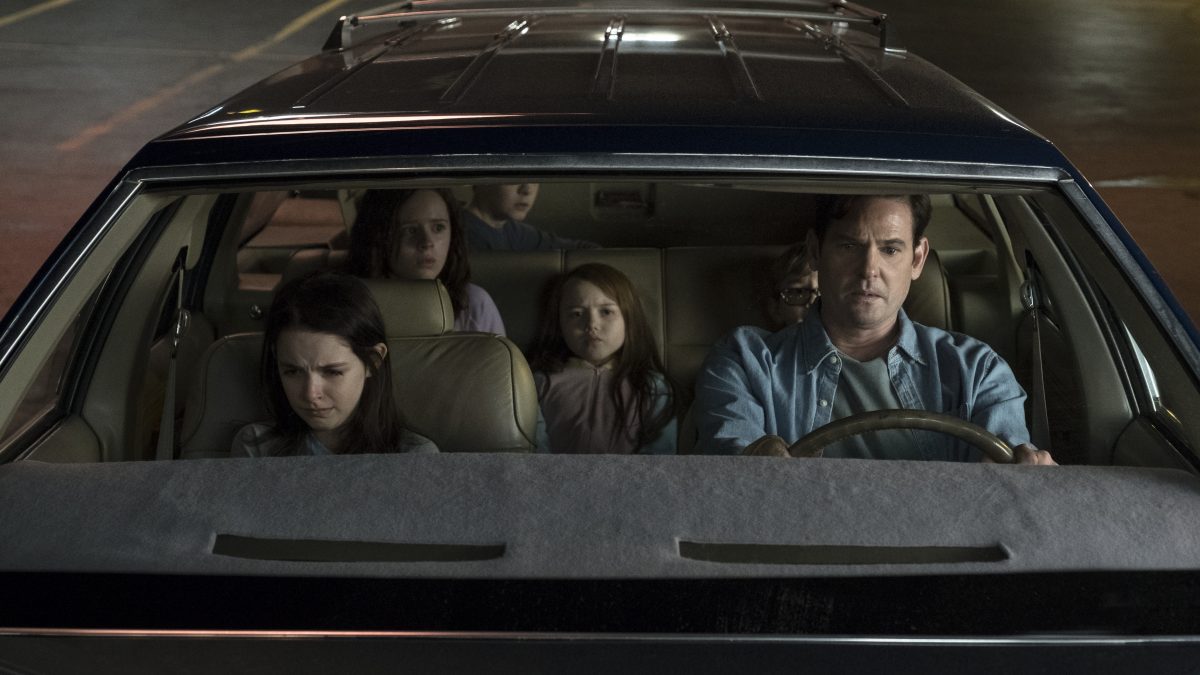The Haunting of Hill House Is a Ghost Story About a Family Haunted by Trauma
4/5 creepy statues.

The Haunting of Hill House, Netflix’s latest adaptation of the beloved Shirley Jackson novel, gives us a stunning and foreboding look at the titular haunted house. The Gothic mansion is large, with long hallways, heavy wood paneling, and ornate details in every inch of the house. The door knobs are gilded with lion faces, and the property is strewn with menacing sculptures. But the house, at turns both enormous and claustrophobic, isn’t the focus of the series. This isn’t a haunted house series, it’s a series about how moments of trauma can linger within a family like a disease, poisoning each member in a painfully specific way.
While Jackson’s original novel takes place almost entirely inside the mansion, the series uses the novel as a jumping-off point to explore the dysfunctional dynamics of the Crain family, past and present. Hill House follows Hugh (Henry Thomas) and Olivia Crain (Carla Gugino) and their five children as they move into the house in the 1980’s. The Crains plan to flip the house and re-sell it, but a family tragedy forces them to flee the house. Years later, the adult siblings are still haunted by their experience in the house, a trauma that manifests itself in a variety of different ways.
Eldest sibling Steve (Michiel Huisman) is a writer who investigates paranormal activity but doesn’t believe in ghosts. He explains his rationale to a women haunted by her dead husband, saying “A ghost can be a lot of things. A memory, a daydream, a secret. Grief, anger, guilt. But in my experience, most times they’re just what we want to see.”
His responsible, type-A sister Shirley (Elizabeth Reaser) deals with ghosts in a different way, by running a funeral home with her husband. Their younger sister Theodora (Kate Siegel) numbs her pain with casual sex with a revolving door of women, but keeps people at an arm’s length due to her touch-based psychic abilities. And the youngest twins, Luke (Oliver Jackson-Cohen) and Nell (Victoria Pedretti) suffer from drug addiction and depression, respectively.
Part of what makes the series so effective is it’s unreliable narration: the siblings each recall the events of their childhood differently, with their experiences defining how they process their respective trauma. As the show bounces back and forth between the 1980’s and present day, the story unfolds and reveals the secrets and shame that each character carries with them.
It’s not the ghosts that haunt the Crain family, but the shared trauma that they are unable to process separately. While the show leans heavily on family drama, there are plenty of scares to be had. Writer/director Mike Flanagan (Gerald’s Game) builds a foreboding sense of dread in every scene, that creeps through the plot and makes even the mundanity of everyday life seem suspect.
Flanagan artfully combines the classic hallmarks of a haunted house story (locked doors, creepy shadows, slowly turning doorknobs) with a refreshingly modern family melodrama to create a series that is both moodily atmospheric and genuinely heartbreaking. If you’re in the mood for slow burn horror and strong performances, The Haunting of Hill House is a powerful entry in the televison horror genre.
(image: Netflix)
Want more stories like this? Become a subscriber and support the site!
—The Mary Sue has a strict comment policy that forbids, but is not limited to, personal insults toward anyone, hate speech, and trolling.—
Have a tip we should know? tips@themarysue.com